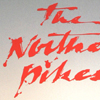Posters have a long and celebrated history promoting entertainment and sports events, tourist attractions and political candidates. Their ease of production, low cost and ability to pack an emotional wallop have made them effective promotional vehicles for both governments and activists. 
Canadian governments have issued many memorable posters in wartime encouraging military recruitment, the purchase of war bonds and adherence to rationing programs. Other official posters have promoted the agricultural settlement of the Northwest, enticed tourists to Canadian resorts and travel destinations, and advanced a myriad of public health recommendations for ‘better’ lifestyle or behavior choices. Posters have also been one of chief vehicles for those protesting or resisting government decisions and programs, and for those advocating social and economic change.
Simply defined, posters are large pieces of paper printed on a single side with either text and/or graphic images, which are intended to be placed or ‘posted’ in a public space. Small posters are sometimes called flyers or handbills. A small minority of posters has a primary artistic purpose; most poster designers integrate art work with text for some promotional or persuasive objective.
Forerunners of the modern poster can be traced back to the development of printing by movable type in the 15th century. Letterpress broadsides were common by the 18th century when they were used for official proclamations and for the announcement of theatrical events and public auctions. Only a minority of these broadside posters included illustrations before the middle of the 19th century since the production of the required wood engravings and woodblocks was labour intensive and expensive.
The invention of lithography in 1796, followed shortly after by chromolithography, transformed poster design. By the end of the 19th century poster designers could employ a full range of colours and introduce much greater detail and perspective into their work. The availability of colour added immensely to the poster’s ability to evoke emotional responses, a quality much prized by propagandists and marketers.
 Despite their many advantages, the poster’s influence in prairie Canada seems to have been more limited than in other regions. This has been attributed to a lack of a postering tradition and to the harsh weather conditions that prevail during long prairie winters. Perhaps more damaging have been the determined efforts of some municipal officials and business groups to restrict what they deem ‘unsightly’ postering in urban areas. Despite their many advantages, the poster’s influence in prairie Canada seems to have been more limited than in other regions. This has been attributed to a lack of a postering tradition and to the harsh weather conditions that prevail during long prairie winters. Perhaps more damaging have been the determined efforts of some municipal officials and business groups to restrict what they deem ‘unsightly’ postering in urban areas.
In 1981 Saskatoon passed a bylaw prohibiting anyone from putting up posters without the consent of city council. The bylaw had been requested by the Saskatoon Business Association which objected to the “ugly look” of public announcements posted on construction hoardings and utility poles. Robert Fink, a community activist, quickly challenged the bylaw. Fink’s freedom to poster was supported by provincial court judge Marion Wedge in a judgment finding the city poster bylaw discriminatory. Wedge noted that postering is a traditional medium of communication which is protected by the Saskatchewan Human Rights Code.
|






